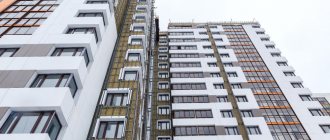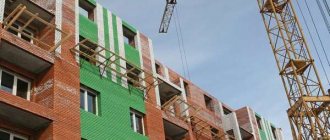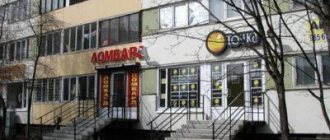Organizations managing new buildings often have to argue with the developer about the latter’s obligation to carry out repairs to the house and networks during the warranty period for the apartment building. In July, the Supreme Court of the Russian Federation, resolving another such dispute, made important comments regarding the start date of the guarantee and the right of the management authority to act on behalf of the owners on such issues. Read on for details.
Management experience: how to effectively and efficiently manage new buildings
57620
Standard service life of residential buildings
This indicator means the time of economically feasible operation of the building and is a rather conventional concept.
In fact, by the end of this period, most of the important components of the building do not exhaust their strength reserves, so they can be safely used for a considerable time. During operation, ongoing preventive maintenance is constantly carried out (i.e., pre-planned in terms of location, cost and volume), and, if necessary, unforeseen repairs of some systems and structures of the house.
Building structures are exposed not only to force from the load, but also to the aggressive influence of the external environment - a variety of corrosion, from which the structure must be protected.
With proper repairs, buildings can last much longer, but in the first years after major repairs, the structure must be carefully monitored.
When determining the service life of a structure as a whole, the average standard indicator of failure-free service is taken for its main structural elements - the foundation, self-supporting and load-bearing walls, columns.
Shelf life of residential buildings made of different materials
As a rule, when choosing an apartment, buyers pay attention to the presence of repairs in the room, the view from the window, and the number of floors. Few people take into account the year of construction of an apartment building (MCD). The service life of a residential apartment building is a rather arbitrary concept.
It means the period of time during which the building retains its basic characteristics and qualities and is safe. Building elements wear out over time.
To keep the house in good condition, preventive maintenance is carried out regularly. This allows you to extend its service life. But there comes a time when the building is so worn out that it cannot be restored. Such a house is considered unsafe and unfit for use.
All residents are being relocated to another building. As a rule, by the end of the standard service life, most buildings do not exhaust their reserves of strength and reliability. They can be used safely for many years to come. There are houses that, on the contrary, wear out before the expiration of the operating period established for them.
This can be affected not only by mistakes made during construction, but also by various external phenomena (strong wind, hail, rain, earthquake). The service life of a building depends on the building materials used, the chosen construction technology and its compliance. There are panel, brick, monolithic, block multi-storey residential buildings. They can be used for different periods of time.
Technical norms define the standards that a house must meet. They indicate the service life of the building.
Panel
Such houses are built using panels. They are inexpensive and easy to build. They are cramped and small in size. But they are quite popular due to the low cost of living space.
Panel apartment buildings were actively built in the 60-80s of the last century. They are still being built today. Such buildings are less durable than block and brick structures. The service life of panel houses from the 80s is 100 years . Their reconstruction is not provided.
MKDs built in 1965-1980 should last until 2055-2080. The service life of modern panel multi-storey buildings built after 1980, according to GOST, is longer and varies from 100 to 120 years. Thus, the demolition of such apartment buildings will be carried out no earlier than 2070-2105.
Brick
Brick houses are warmer and more reliable than panel houses. They are not subject to corrosion processes and have an aesthetic appearance. Their service life is determined by the time of construction.
For example, buildings erected in pre-war times last much less than modern multi-storey buildings. Their period of safe use according to established standards does not exceed a century. But in practice, most of these objects were subject to demolition after 40 years.
By making some changes to the layout, it was possible to extend the life of the brick house. MKDs built in the late post-Soviet period can be used for living for 150 years.
Brick withstands the negative effects of precipitation, temperature fluctuations, and exposure to ultraviolet rays quite well. Ceramic products made from baked clay are characterized by high strength characteristics and environmental friendliness.
There are hollow and solid bricks. This quality does not particularly affect operational parameters. The latter option only has higher thermal insulation properties.
Monolithic
Monolithic MKD are seamless structures made of concrete. They have a one-piece construction. They are erected by collecting formwork and pouring liquid concrete into it. Thus, all walls, ceilings and load-bearing partitions are completed.
Monolithic houses are reliable and durable. They are seismically resistant. The service life is more than 125-150 years. Solid monolithic multi-storey buildings are rare.
Usually only the frame of the structure and interfloor ceilings are made monolithic. Walls can be erected from various building materials: bricks, panels. Based on this, monolithic-brick and monolithic-block MKDs are distinguished. Naturally, their service life is lower than that of solid monolithic buildings.
Block
Block multi-storey buildings are built from different building materials. Expanded clay concrete, aerated concrete, wood concrete, ceramic, and foam concrete blocks can be used. The performance of the building depends on the type of product chosen.
MKD made from blocks are similar in structure to panel ones. The first buildings of this type appeared in the 50-60s of the twentieth century. They were actively erected with the aim of quickly creating a large amount of living space and settling people. At that time, houses with 5-6 floors were erected.
Block multi-storey buildings built in 1965-1980 have a standard service life of 100 years. This means that their demolition will be carried out no earlier than 2055-2080.
If previously block houses were outwardly similar to panel ones in their characteristics and design, then modern block buildings have significant differences.
Construction technologies that are used today make it possible to create 12-16-story buildings. Their service life is at least 100 years. Among the advantages of block MKD it is worth noting seismic resistance, high sound and heat insulation.
Best before date
These indicators are different for different types of residential buildings:
- Houses of the Soviet period:
- Pre-war Stalin buildings - 125;
- “Stalins” of post-war construction -150;
- "Khrushchev" panel type - 50;
- Brick 4-5 storey houses - 100;
- Panel and block 9-16 storeys – 100.
- Modern buildings:
- Houses made of brick and monolithic reinforced concrete - 125-150;
- Panel - 100-120.
Reinforced concrete houses are very sensitive to the timing of major repairs. Those. done at the right time and in the required volumes, it can significantly extend the life of the home. However, if repairs are needed, but for some reason are not carried out, then the buildings begin to rapidly wear out, and after some time the repairs become impractical.
How many years are apartment buildings designed for?
Today in the real estate market you can often find Stalin and Khrushchev buildings. Apartments in such apartment complexes are often put up for sale at low prices.
But you need to take into account that these are old houses, which may soon be considered unsafe. Before buying a room in a Stalin or Khrushchev building, you need to find out how many years of operation the building is designed for.
Stalin's
Stalinka or Stalinist houses are the colloquial name for apartment buildings built in the USSR from the 1930s to the late 1950s. This is a permanent type of structure with a height of more than two floors. The walls of such a building are made of non-combustible materials. Stalinka apartments are provided with all amenities (plumbing, heating, sewerage). The service life of such MKDs depends on the time of their construction and is shown in the table below.
| Type of apartment building | Construction time in years | Operational life | Planned period for reconstruction | What year is the demolition planned? |
| Pre-war Stalinists | 1930-1940 | 120 | 1990-2005 | 2050-2070 |
| Stalinists of the post-war period | 1945-1955 | 150 | 2020-2030 | 2095-2105 |
Types of residential apartment buildings
According to the level of capital, residential buildings are classified according to the material used to manufacture the main (non-replacement) elements (foundation, walls/floor columns) and are divided into 5 groups, each of which has its own service life:
- 150 years for especially capital stone buildings with stone/concrete foundations, brick, monolithic and large-block walls and reinforced concrete floors.
- 125 ice for ordinary stone buildings with stone foundations, brick, large-block and large-panel walls, mixed or reinforced concrete floors, stone on metal beams.
- 100 years in the case of lightweight stone buildings with stone and concrete foundations, lightweight construction of walls made of brick, cinder blocks, etc., floors made of reinforced concrete, wood or stone on metal beams.
- 30 years if the buildings are prefabricated panel, frame, adobe, wood-stone foundations, frame walls, wooden floors.
- 15 years for extremely light residential buildings made of boards and similar low-strength materials.
The service life of individual parts of the building varies depending on the material of manufacture and ranges from:
- Foundation 50-150 years.
- The walls are 50-100 years old.
- Columns 85-100 years old;
- Overlappings 50-100 years.
- Roof 30-100 years.
- Roofing 8-25 years.
- Floors 15 – 60 years.
- Stairs are 30-100 years old.
When exposed to an aggressive external environment, this period is reduced by 2-3 times.
Wear and tear of buildings
Regardless of the class and degree of capital, all buildings are subject to wear and tear over time.
Physical
Physical wear and tear means that, under the influence of natural factors, a building gradually loses some of its original physical properties and characteristics. The specific degree of wear varies depending on the characteristics of the materials, the design of the building, and the features of its location, incl. climatic and operating conditions.
Moral
Obsolescence arises due to gradual technological development in society and is defined as a discrepancy in functional purpose.
Signs of obsolescence of a building:
- The layout of the apartments does not meet modern requirements.
- Engineering equipment systems are outdated.
- Excessive building and settlement density.
- Insufficient landscaping and landscaping.
The first type of obsolescence is determined by a decrease in the price of a building in comparison with the time of its construction due to the simplification, and therefore reduction in cost, of the construction process, as well as due to the construction of more modern housing. Accordingly, it is necessary to periodically re-evaluate the housing stock.
The second type determines the obsolescence of the building and its constituent elements in relation to the currently existing requirements for space-planning, sanitary-hygienic and other solutions, landscaping, landscaping, etc.
Claims against the developer must be filed within the warranty period for the MKD
The developer appealed to the Supreme Court of the Russian Federation, which considered two issues:
- Could the MA really act in court on behalf of the owners of premises in the apartment building.
The Supreme Court of the Russian Federation noted that the absence of a HOA in a house should not lead to the loss of the civil law community uniting owners of the right to bring claims related to common property. At the same time, filing such claims by all owners is difficult and does not meet the requirements of procedural economy. The potential costs that will accompany filing a class action lawsuit may be disproportionate to the amount of property benefits received as a result of restoring the violated right.
Therefore, the most rational thing in the absence of an HOA is to provide the opportunity to file such claims through a representative - the management organization. In this regard, the conclusions of the courts that the management authority has the authority to act in the interests of the owners of the premises are legitimate.
2. Have claims been filed against the developer during the warranty period for the new MKD and its elements?
The provisions of Part 5, 5.1 Art. 7 No. 214-FZ stipulates that the warranty period for a shared construction project is five years, for technological and engineering equipment - three years. As a general rule, it is calculated from the moment the object that was the subject of the agreement, for example, an apartment, is transferred to the participant in shared construction. In this case, in relation to technological and engineering equipment, the period is calculated from the date of signing the first document on the transfer of the shared construction project.
There is no difference between the legal regimes of this equipment and other common property. Therefore, the Supreme Court of the Russian Federation noted that in relation to other common property that is in common shared ownership, the warranty period also begins from the date of signing the first document on the transfer of a shared construction project and is five years.
Previous courts did not take this into account and erroneously referred to the regulation of relations from the contract - to Chapter. 37 Civil Code of the Russian Federation. It was necessary to apply the norms of the Federal Law of December 30, 2004 No. 214-FZ and the provisions of Chapter. 30 Civil Code of the Russian Federation. The courts incorrectly determined the start date of the warranty period - from the date of issue of permission to put an apartment building into operation. They did not establish the day of signing the first document on the transfer of the apartment building, as it should have been done in accordance with Art. 7 No. 214-FZ.
The Supreme Court of the Russian Federation pointed out another significant error. The courts determined that the warranty period for the house was five years, but did not take into account that a number of the deficiencies indicated in the expert report related to engineering and technological equipment. For such equipment, the warranty period is shorter - three years (Part 5.1, Article 7 No. 214-FZ).
In addition, previous authorities did not check when all the shortcomings in the common property were actually identified. Based on this, the RF Supreme Court overturned all previously adopted decisions and sent the case for a new trial to the court of first instance.
Does the developer have the right to enter into direct contracts in new buildings?
105660









